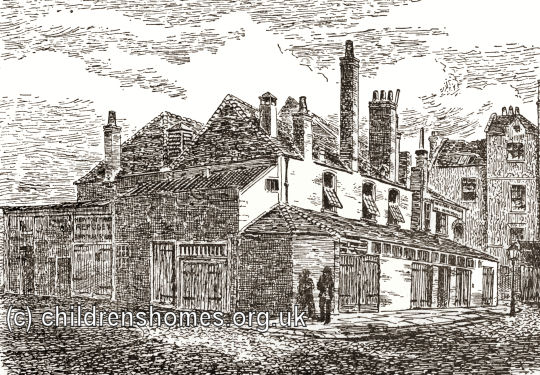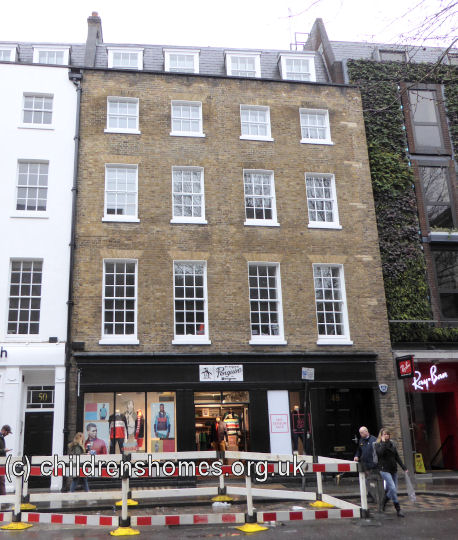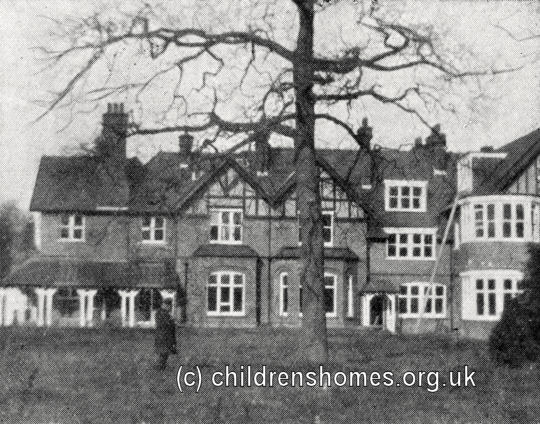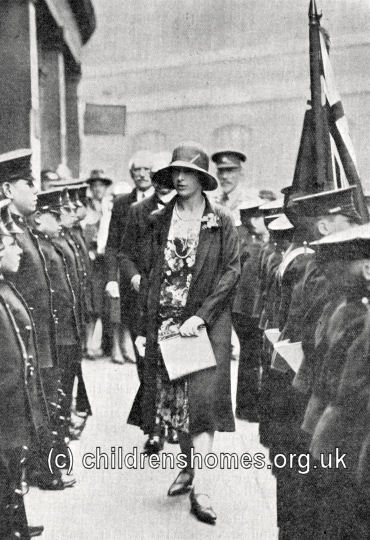Newport Market Refuge / Industrial School / Army Bands School
In the early 1860s, two clergymen from St Mary's Church on what is now Charing Cross Road, the Rev. J.C. Chambers (Rector, and also warden of the House of Charity) and the Rev. J. Williams, were working amongst the enormous poverty that existed in the area. In 1863, Williams rented a room in which eight or nine unsuccessful applicants for poor relief could be given shelter and a meal. When the room proved inadequate for the great number seeking admission, he began to publicise his charitable scheme and appeal for funds to extend it.
Williams received support from Catherine Gladstone, wife of the politician W.E. Gladstone, and was able to take another room to house 20 more cases, but this again proved insufficient. Following a meeting of the charity's Committee, presided over by the Rev. Chambers, a property was purchased at Newport Market. The building had previously been a slaughter house and at one time had contained a chapel in which Cromwell had housed some of his cavalry. The running of the establishment was undertaken by Sisters from the order of St Margaret's, East Grinstead.

Newport Market Refuge, 1860s. © Peter Higginbotham
Some of the first individuals admitted to the refuge were from the professional classes who had met with misfortune. The men amongst them comprised an actor, a clergyman, 25 clerks, 2 draughtsmen, a classics teacher, 4 law-writers, a doctor, reporter, schoolmaster, language teacher and a tutor. These were provided with quarters below stairs, while housed above were the women: an actress, a clerk's wife, 4 governess, 2 companions and a Mission woman.
In the earliest minutes of the charity, little mention is made of boys. However, this changed following an important Annual General Meeting on February 3rd, 1865, chaired by Mr W.E. Gladstone, then Chancellor of the Exchequer, and also attended by Lord Robert Cecil, later Marquis of Salisbury. The meeting unanimously supported the resolution 'That it is expedient to appropriate a portion of the funds of the Newport Market Refuge for the establishment of a School, or otherwise providing for homeless and destitute boys who take refuge there.'
When the old Market House adjoining the Refuge became available for lease in 1866, it was decided to establish a combined Industrial School and Refuge for boys. The new School was opened on February 4th, 1867. From the outset, was determined that instrumental music was to form part of the boys' training. The first boy to be admitted, who had previously never attended school, on leaving entered the band of the H.M.S. Forte. The School's band became one of the most important parts of its curriculum, so much so that in 1878 it was decreed that 'no boy will be considered eligible for admission into the School unless his parents or guardians consent to his being taught music in the School, should the Committee think fit, with a view to his being enlisted in a Military Band of the Army.'
The growing significance of the School in training military bandsmen is demonstrated by the fact that in 1887, the 99th Wiltshire Regiment included eight Old Boys of the School: 1 Band Sergeant, 1 Band Corporal, 2 Lance Corporals, 3 Bandsmen and 1 Drummer Boys
By 1877, a total of 120 boys from the School had joined the army and in that year alone, 110 requests for boys were received from army bands. To allow an expansion of its operation, the charity inaugurated a special fund and when receipts reached £7,000 plans for a new building were commenced. Progress in raising the money was slow, however. In September, 1882, the establishment was forced to vacate the Newport Market premises (recorded in 1881 as 8 Prince's Row Square) which were then demolished by the Metropolitan Board of Works as part of the construction of Charing Cross Road. As a temporary measure, the Refuge and what was now referred to as the Industrial School took up residence at 48-49 Long Acre.

48-49 Long Acre, 2018. © Peter Higginbotham
Eventually, sufficient funds were raised and new premises, at 74 Coburg Row (later reassigned as 28-30 Greencoat Place), Westminster, were opened in On November 18th, 1884, by the Bishop of London. The School could now accommodate up to 100 boys, who were aged 1o to 13 at their date of admission. The Refuge, now termed a Night Refuge, also moved to Coburg Row, with accommodation for 80.
In 1890, the operation of the School and Refuge were outlined as follows:
Also in 1890, the Refuge was recorded as having a section for the reception and rescue of 'fallen' women.
At this period, the School benefitted from the generosity of Mr Henry and Lady Rose Weigall who for more than forty years received its boys at Southwood House, Ramsgate, for several weeks during the summer. The School also received support from the Earl of Shaftesbury and benefactions from the Royal Family, with Princess Mary (the Princess Royal from 1932) being its Patroness for many years.
In 1903, the Women's Refuge was closed, with the Men's Refuge continuing in operation until 1905. From then on, the charity centred on what was now known as the Newport Market Army Training School.
In 1927, the School moved to a new home at Darrick Wood, Orpington, Kent, with Princess Mary performing the official opening on June 7th. The new premises could accommodate 80 boys, with the age at admission now set at 9 to 12½ years.

Newport Market Army Training School, Orpington, 1930s. © Peter Higginbotham
In 1928, due to increasing financial difficulties, the School was taken over by the Shaftesbury Homes and Arethusa, of which Princess Mary new became a Patroness alongside it existing Patron, the Duke of Connaught. In 1929, the establishment, now renamed the Newport Market Army Bands School was made the gift of a swimming bath, funded Mr Thomas Delcomyn, a member of the Shaftesbury homes Committee.

Princess Mary inspecting Newport Market School Guard of Honour, 1930s. © Peter Higginbotham
In 1937, the Shaftesbury Homes' Fortescue House School moved to large new premises in Twickenham where it was decided that the Newport Market School could also be accommodated. The combined institution was given the rather cumbersome official name of 'Fortescue House (incorporating the New Market Army Bands School)'. Fortescue House was closed in 1975.
The Greencoat Place premises still stand and in recent times have been used as a hostel. The Darrick Wood property has now been converted to residential use.
Records
Note: many repositories impose a closure period of up to 100 years for records identifying individuals. Before travelling a long distance, always check that the records you want to consult will be available.
- The London Metropolitan Archives, 40 Northampton Road, London, EC1R 0HB now holds the archives of the Shaftesbury Homes and Arethusa Training Ship. More details in their online catalogue entry.
Census
Bibliography
- Bailey, Marion Chance of a Lifetime - the Story of the Shaftesbury Homes and Arethusa (1996, Dianthus Publishing)
- Cuthbert, V Where Dreams Come True: A Record of 95 Years (1937, London: Shaftesbury Homes and "Arethusa" Training Ship)
- Higginbotham, Peter Children's Homes: A History of Institutional Care for Britain's Young (2017, Pen & Sword)
- Hodder, Edwin The Life and Work of the Seventh Earl of Shaftesbury, K.G. (1886, Cassell)
Links
Except where indicated, this page () © Peter Higginbotham. Contents may not be reproduced without permission.


